The most important Drawback Of Utilizing Drain Cctv
The rapid urbanization of the modern world presents a set of unique challenges for drainage design. Additionally, ground penetrating radar increased waste generation, climate change-induced rainfall variability, and cctv drain survey drastic land-use changes necessitate the design of resilient, drain survey report adaptable, and sustainable urban drainage systems. Impervious surfaces such as roads, buildings, and pavements prevent the natural percolation of water into the ground, increasing surface runoff and taxing the existing drainage infrastructure.
Drainage systems fall into two primary categories: surface and subsurface. These systems primarily incorporate open ditches and cctv drain survey carefully constructed sloping surfaces. Surface drainage systems direct water from the ground's surface, effectively stopping water accumulation and protecting structures from water damage. On the other hand, subsurface drainage systems control the water table below the ground's surface using a network of pipes and conduits.
Sustainable Urban Drainage Systems, gpr survey or SUDS, are a response to the challenges posed by urbanization. to mimic natural water management within urban settings as closely as possible. They also provide pollution control and biodiversity benefits. They manage rainfall with source control, ground penetrating radar storage, evaporation, infiltration into the ground, and cctv drain survey slow release features.
As a consequence, drain jetting companies now invest in extensive training programs. Handling high-pressure systems is dangerous without proper guidance causing damage to pipes and pose a risk to operator safety. Modern technology's introduction also necessitates advanced training for operators.
Furthermore, wastewater recovery is gaining momentum as future-forward utilities recognize its potential. Wastewater is now considered a resource, mined for essential elements like nutrients, energy, and even potable water. Utilities are transitioning from a linear 'use and dispose of' approach to a more sustainable, circular economy model.
Understanding this intricate balance requires acknowledgment of utilities as the backbone of society, pushing through obstacles to ensure the populace’s hydration and well-being. Their impact reflects in public health, water leak repair social mobility, and economic prosperity. The balance between managing current challenges and gearing up for future advancements will determine the trajectory of this vital sector. To conclude, water utilities are an integral part of our lives, transcending the simple role of delivering water.
The Fourth Industrial Revolution, drain survey report marked by digital connectivity, big data, and artificial intelligence, promises to transform the sector. Despite the mounting challenges, exciting prospects are emerging that could redefine the future of water utilities.
These systems are vital components of modern civilizations, designed meticulously to ensure the safe and systematic disposal of sewage to prevent potential exposure to the public. An unforeseen block could disrupt this balance, causing subsequent build-ups and obstructing proper disposal. This obstruction can lead to sewage backflows, a dangerous event in which sewage water flows back into one's household from the drainage pipes, potentially turning into a public health emergency. Blocked drains disrupt the delicate balance of our sewer systems and their efficient functioning.
As science and ground penetrating radar technology advanced, drain jetting there was a significant transformation that involved upgrading to iron, then steel, and finally plastic pipes. It began with a simple network of wooden pipes in urbanized regions. Each transition aimed to enhance hygiene, improve water pressure, longevity, and drain cctv overall efficiency.
The usage of improved protective gear is now mandatory, drain cctv with companies utilizing equipment such as hard hats, steel-toe boots, safety gloves, eye protection and hearing protection when working with drain jetting equipment.
Drainage systems have played a fundamental role in human habitations since the dawn of civilization. While the concept and design of these systems have evolved notably over centuries, their core purpose remains the same: to channel away excess water from a given area and direct it to a suitable endpoint. In this discussion, we shall delve into the aspects that make drainage an essential element in urban planning and design. They are vital for maintaining hygiene, preventing diseases, sustaining agricultural growth, and safeguarding human lives and properties from damage due to flooding.
Conversely, the implications of blocked drains extend way beyond inconvenience, potentially taking a toll on human health and drain survey report the environment. Indeed, many might argue it is a seemingly unavoidable and unfortunate aspect of property ownership, with many assuming it's an inconsequential nuisance rather than a critical concern. In order to truly appreciate the gravity of the blocked drain menace, it is imperative to delve into the nitty-gritty details and unearth the core reasons behind its perilous nature. Every homeowner, at some point or another, cctv drain survey has experienced the inconvenience and unsightly nature of blocked drains.

Reviews